Lag-screw fixation
1. General considerations
Partial articular fractures require anatomical reduction and may be fixed with lag screws if the size of the fragment allows.
The joint may collapse if there is impaction or comminution while the lag screw is tightened. In this case, plate fixation should be considered for chondral support.

Percutaneous vs open reduction and fixation
Percutaneous reduction and fixation may be performed.
The advantages are:
- Shorter operation time
- Less soft-tissue damage
- Faster mobilization
This treatment option needs some skills and experience and special reduction forceps to avoid impingement of swollen soft tissue (atraumatic technique).
These reduction forceps allow to hold the reduction at the planned screw placement, and drilling and screw insertion. There is no need for additional K-wire fixation or reduction forceps placement.
If a percutaneous reduction is not achievable, the treatment can be changed to open surgery.
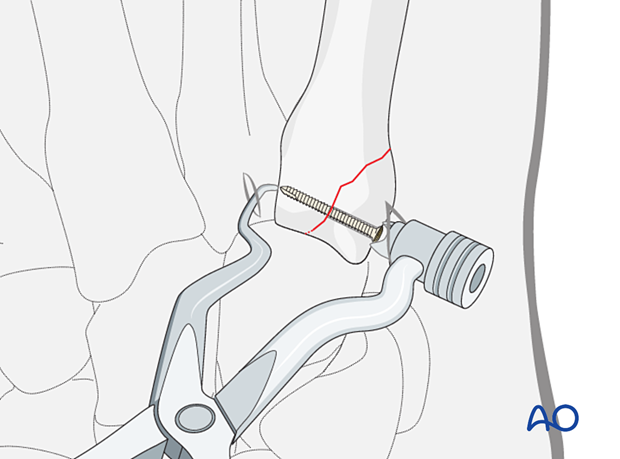
2. Patient preparation
Place the patient supine with the arm on a radiolucent hand table.
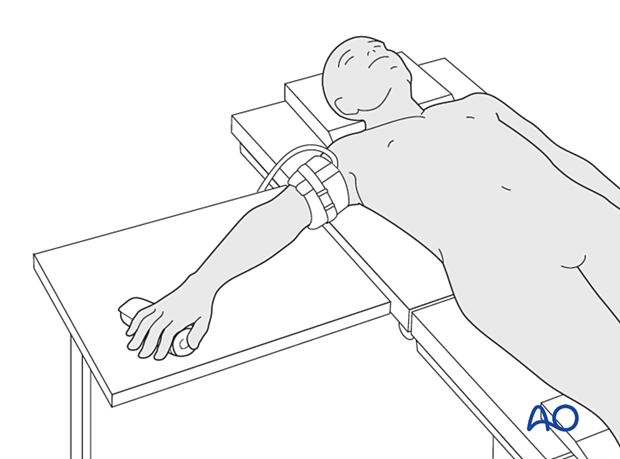
3. Approaches
For this procedure, a dorsal approach to the CMC joint or a dorsal approach to the 5th CMC joint can be used.
Alternatively, the proximal end of the following approaches can be used:
4. Reduction
Closed reduction
Reduce the fracture indirectly by manual traction.
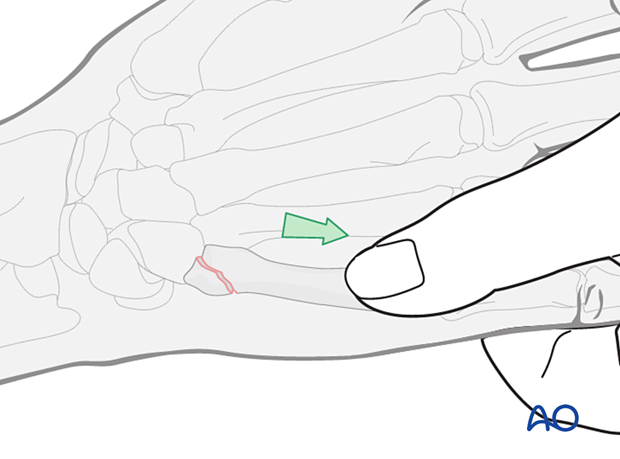
Special reduction forceps designed for percutaneous fixation may be used to hold the reduction.
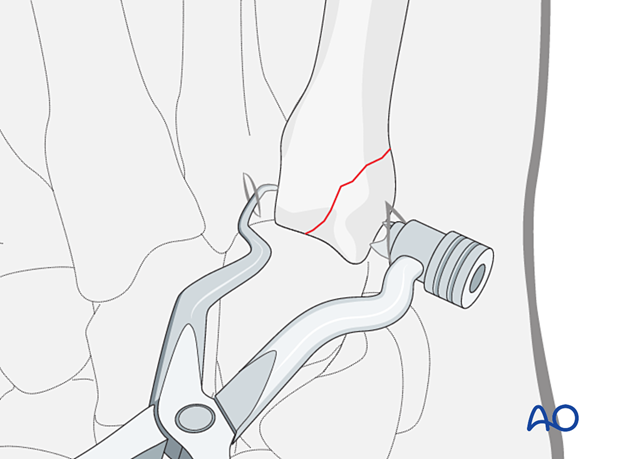
Open reduction
For more accurate reduction, use small pointed reduction forceps gently to manipulate the fracture. Application of excessive force can result in fragmentation.
Confirm reduction with an image intensifier.
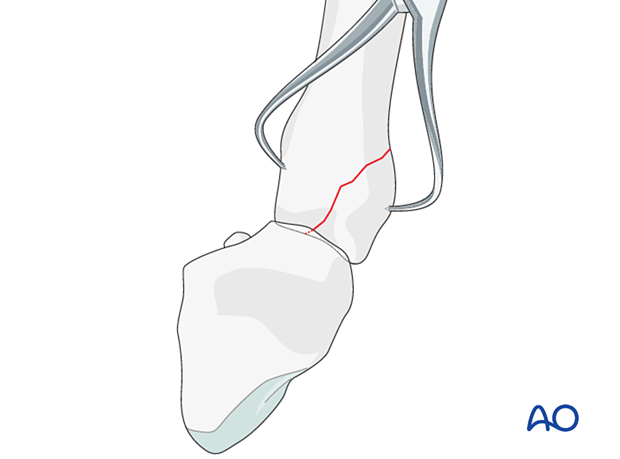
Preliminary K-wire fixation
Preliminarily fix the fragments by inserting a K-wire. Be careful to place it so it will not conflict with later screw placement.
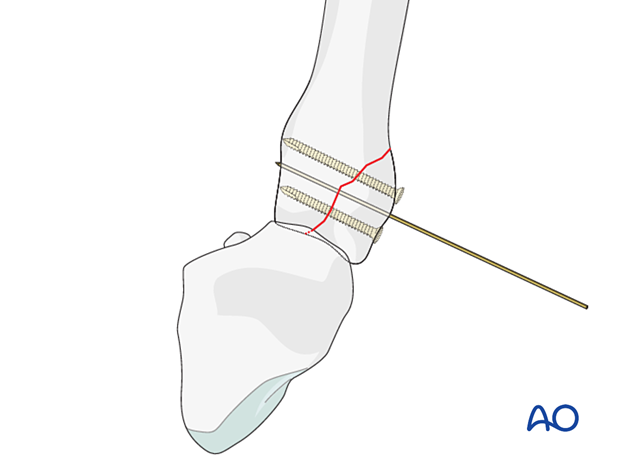
5. Fixation
Planning for screw insertion
Each lag screw must be inserted perpendicularly to the fracture plane.
Do not insert screws too close to the fracture apex or the subchondral bone. A minimal distance from the fracture line, equal to the screw head diameter, must be observed.
The screw length needs to be adequate for the screw to penetrate and purchase in the opposite (trans) cortex.
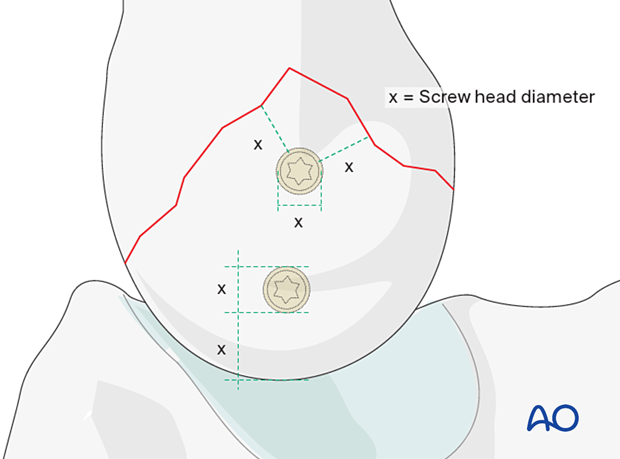
Screw size selection
The exact size of the diameter of the screws used will be determined by the fragment size and the fracture configuration.
The various gliding and thread hole drill sizes for different screws are illustrated here.
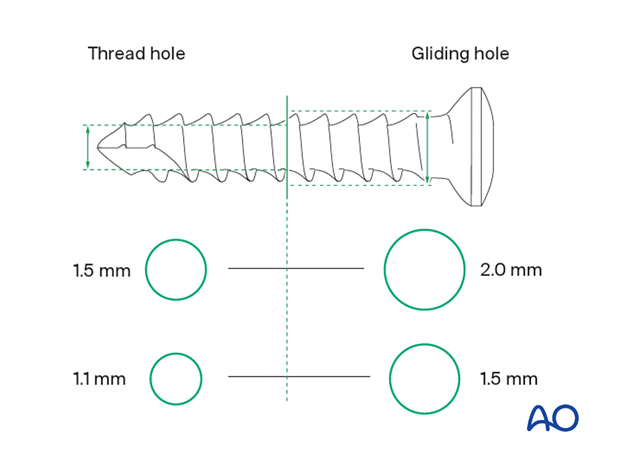
Pitfall: countersinking in the metaphysis
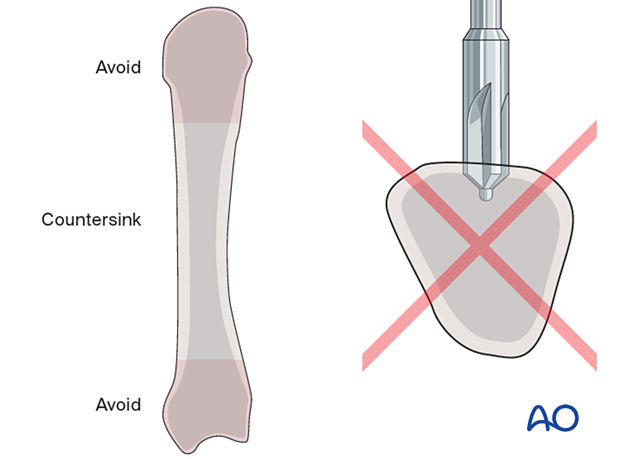
Screw insertion
Insert the screw closest to the articular surface first.
Alternate tightening of the two lag screws helps to avoid tilting the fragment and applies even compression forces across the fracture surface.

6. Final assessment
Confirm anatomical reduction and fixation with an image intensifier.
7. Aftercare
Postoperative phases
The aftercare can be divided into four phases of healing:
- Inflammatory phase (week 1–3)
- Early repair phase (week 4–6)
- Late repair and early tissue remodeling phase (week 7–12)
- Remodeling and reintegration phase (week 13 onwards)
Full details on each phase can be found here.
Postoperative treatment
If there is swelling or joint instability, the hand is supported with a dorsal splint for a week. This would allow for finger movement and help with pain and edema control. The arm should be actively elevated to help reduce the swelling.
The hand should be splinted in an intrinsic plus (Edinburgh) position:
- Neutral wrist position or up to 15° extension
- MCP joint in 90° flexion
- PIP joint in extension
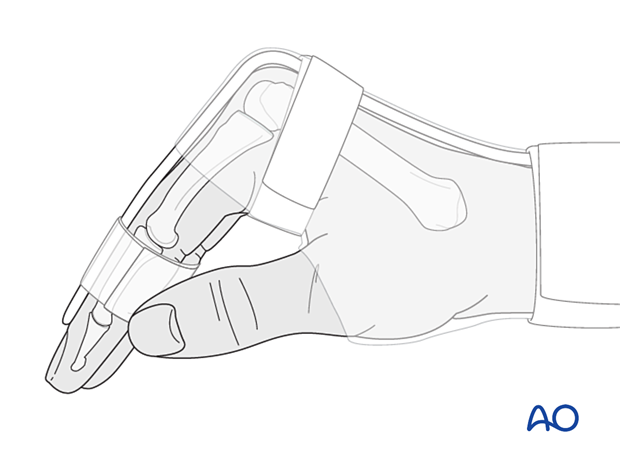
The reason for splinting the MCP joint in flexion is to maintain its collateral ligament at maximal length, avoiding scar contraction.
PIP joint extension in this position also maintains the length of the volar plate.
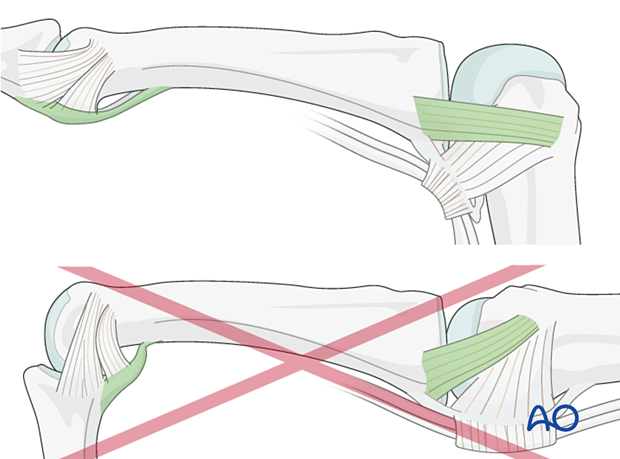
After subsided swelling, protect the digit with buddy strapping to a neighboring finger to neutralize lateral forces on the finger.
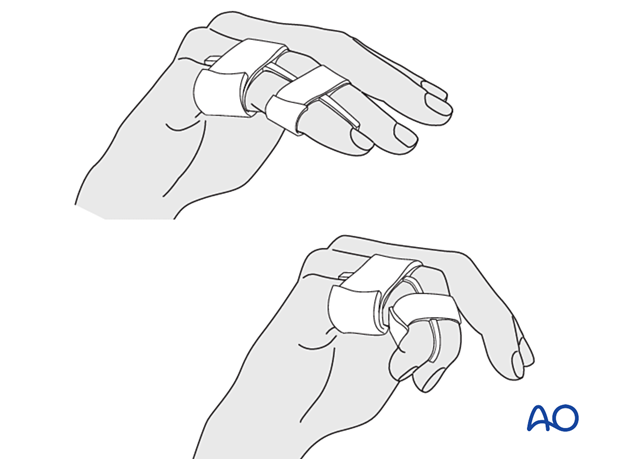
Functional exercises
To prevent joint stiffness, the patient should be instructed to begin active motion (flexion and extension) immediately after surgery.
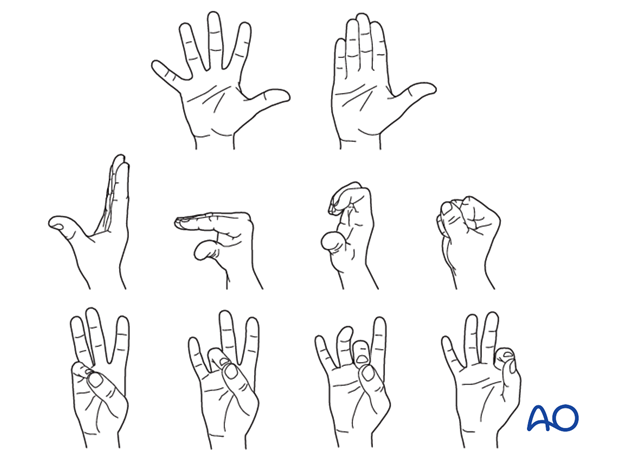
Follow-up
See the patient after 5 and 10 days of surgery.
Implant removal
The implants may need to be removed in cases of soft-tissue irritation.
In case of joint stiffness or tendon adhesion restricting finger movement, arthrolysis or tenolysis may become necessary. In these circumstances, the implants can be removed at the same time.













